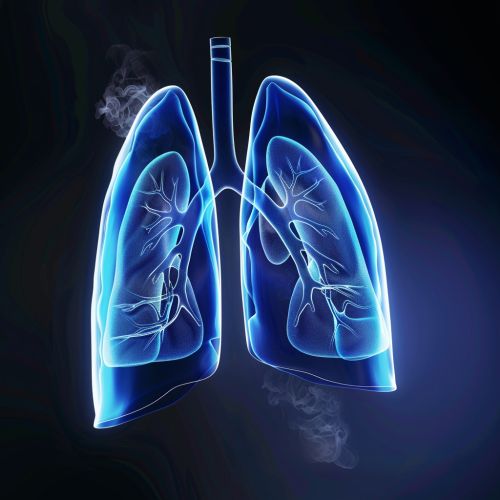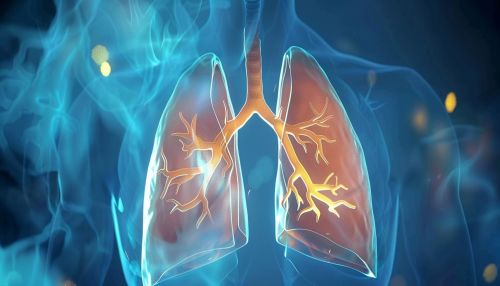Acid-Base Balance
Overview
Acid-base balance refers to the homeostatic regulation of the pH levels in the body's fluids, particularly the blood. This balance is crucial for normal cellular function and metabolic processes. The human body maintains a tightly regulated pH range of 7.35 to 7.45 in the blood through various mechanisms involving the respiratory and renal systems, as well as buffer systems.
Mechanisms of Acid-Base Regulation
Buffer Systems
Buffer systems are the first line of defense against pH changes. They consist of weak acids and their conjugate bases, which can neutralize excess acids or bases. The primary buffer systems in the body include:
- **Bicarbonate Buffer System**: This is the most important extracellular buffer system. It involves the equilibrium between carbonic acid (H₂CO₃) and bicarbonate ions (HCO₃⁻). The reaction can be represented as:
\[
\text{CO}_2 + \text{H}_2\text{O} \leftrightarrow \text{H}_2\text{CO}_3 \leftrightarrow \text{H}^+ + \text{HCO}_3^-
\]
This system is regulated by the respiratory system (which controls CO₂ levels) and the kidneys (which control HCO₃⁻ levels).
- **Phosphate Buffer System**: This system is more effective in the intracellular fluid and the renal tubules. It involves the equilibrium between dihydrogen phosphate (H₂PO₄⁻) and hydrogen phosphate (HPO₄²⁻).
- **Protein Buffer System**: Proteins, particularly hemoglobin in red blood cells, act as buffers by binding to hydrogen ions. This system is significant in both intracellular and extracellular fluids.
Respiratory Regulation
The respiratory system regulates acid-base balance by controlling the levels of carbon dioxide (CO₂) in the blood. CO₂ is a byproduct of cellular metabolism and can combine with water to form carbonic acid, which dissociates into hydrogen ions and bicarbonate. By altering the rate and depth of breathing, the body can increase or decrease the exhalation of CO₂, thus influencing blood pH.
- **Hyperventilation**: Increases the exhalation of CO₂, reducing carbonic acid levels and increasing pH (alkalosis).
- **Hypoventilation**: Decreases the exhalation of CO₂, increasing carbonic acid levels and decreasing pH (acidosis).
Renal Regulation
The kidneys maintain acid-base balance by excreting hydrogen ions and reabsorbing bicarbonate from urine. This process is slower than respiratory regulation but provides a more long-term solution to pH imbalances.
- **Hydrogen Ion Excretion**: The kidneys secrete hydrogen ions into the urine, which combines with buffers like phosphate and ammonia to be excreted.
- **Bicarbonate Reabsorption**: The kidneys reabsorb bicarbonate from the filtrate, which helps neutralize excess acids in the blood.
Disorders of Acid-Base Balance
Acidosis
Acidosis is a condition characterized by an excess of hydrogen ions, leading to a decrease in blood pH below 7.35. It can be classified into two main types:
- **Respiratory Acidosis**: Caused by impaired lung function, leading to an accumulation of CO₂. Conditions such as chronic obstructive pulmonary disease (COPD), asthma, and respiratory muscle weakness can contribute to respiratory acidosis.
- **Metabolic Acidosis**: Results from an excess of acid production or a loss of bicarbonate. Causes include diabetic ketoacidosis, lactic acidosis, renal failure, and severe diarrhea.
Alkalosis
Alkalosis is a condition characterized by a deficiency of hydrogen ions, leading to an increase in blood pH above 7.45. It can also be classified into two main types:
- **Respiratory Alkalosis**: Caused by excessive loss of CO₂ due to hyperventilation. Conditions such as anxiety, fever, and high altitude can lead to respiratory alkalosis.
- **Metabolic Alkalosis**: Results from an excess of bicarbonate or a loss of hydrogen ions. Causes include prolonged vomiting, diuretic use, and excessive intake of antacids.
Diagnostic Methods
The diagnosis of acid-base disorders involves the measurement of arterial blood gases (ABGs) and serum electrolytes. Key parameters include:
- **pH**: Indicates the acidity or alkalinity of the blood.
- **PaCO₂**: Partial pressure of carbon dioxide, reflecting respiratory function.
- **HCO₃⁻**: Bicarbonate concentration, reflecting metabolic function.
- **Anion Gap**: Calculated as [Na⁺] - ([Cl⁻] + [HCO₃⁻]), used to identify the presence of unmeasured anions in metabolic acidosis.
Treatment Approaches
The treatment of acid-base disorders aims to address the underlying cause and restore normal pH levels. Specific approaches include:
- **Respiratory Acidosis**: Improving ventilation through bronchodilators, mechanical ventilation, or treating underlying lung diseases.
- **Metabolic Acidosis**: Administering bicarbonate or treating the underlying condition, such as insulin for diabetic ketoacidosis.
- **Respiratory Alkalosis**: Addressing the cause of hyperventilation, such as anxiety management or oxygen therapy.
- **Metabolic Alkalosis**: Correcting electrolyte imbalances, administering acidifying agents, or treating the underlying cause.
Clinical Implications
Acid-base balance is critical for normal physiological function. Disruptions can lead to significant clinical consequences, including altered enzyme activity, impaired cellular function, and disturbances in electrolyte balance. Understanding the mechanisms and management of acid-base disorders is essential for healthcare professionals in diagnosing and treating patients effectively.
See Also


